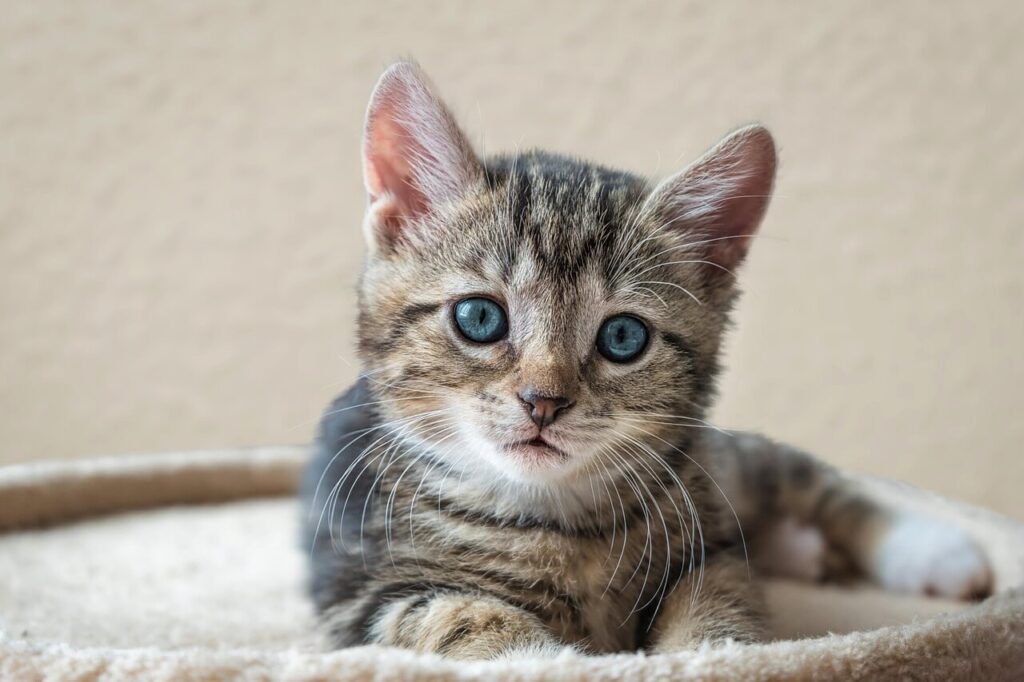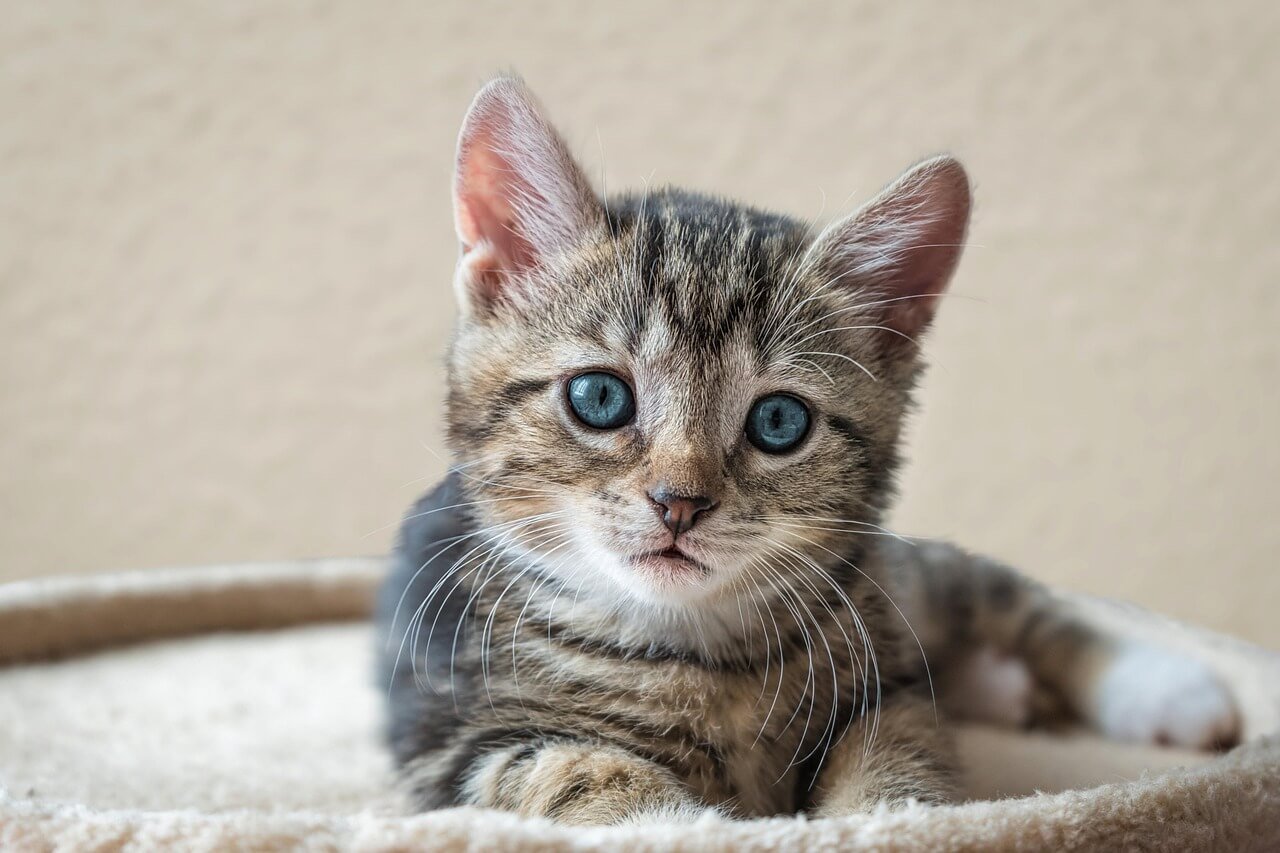Decoding the Mystery of Cat Tail Wagging: What Your Feline Is Trying to Tell You
Cats are enigmatic creatures, and their tails are one of the most expressive parts of their body. A wagging tail might mean something entirely different for a cat than it does for a dog. While dogs wag their tails to express happiness or excitement, a cat tail wagging can convey a wide range of emotions, from curiosity to irritation. Understanding these subtle cues can help you better connect with your feline companion and strengthen the bond you share. Let’s dive into the fascinating world of cat tail language and uncover what your cat is really trying to say.
What Does Your Cat’s Tail Movement Mean?
A cat’s tail is like a mood meter, constantly communicating how they feel. Here are some common types of cat tail wagging and what they signify:
Gentle Swish or Slow Wag
This movement often indicates curiosity or focus. Your cat might be observing something interesting, like a bird outside the window or a toy on the floor.Quick, Agitated Twitch
If your cat’s tail is flicking rapidly, it could mean they’re feeling annoyed or overstimulated. It’s best to give them some space to avoid unwanted scratches or bites.Broad, Sweeping Wag
This motion suggests your cat is in a playful or excited mood. It’s often seen when they’re about to pounce on a toy or chase after something fun.Puffed-Up Tail with Twitching
When a cat’s tail is puffed up and twitching, it usually signals fear or aggression. They might be feeling threatened and are trying to appear larger to ward off danger.Tail Wrapped Around You or Another Cat
This is a sign of affection and trust. Cats often use this gesture to show they care for someone or feel comfortable around them.
Understanding these tail movements can help you respond appropriately to your cat’s needs and emotions. By paying attention to their tail language, you’ll become more attuned to their feelings and build a stronger connection with them.
How Tail Movements Reflect Your Cat’s Emotions
The way a cat wags its tail can reveal a lot about its emotional state. Here are some key emotions linked to cat tail wagging :
Happiness
A gently swaying tail held high often indicates contentment. Your cat might be feeling relaxed and secure in their environment.Anxiety
A low-hanging tail with slight twitching can signal nervousness or uncertainty. This might happen in unfamiliar situations or around new people.Aggression
A stiff, rapidly moving tail is a warning sign that your cat is upset or ready to defend itself. Proceed with caution if you notice this behavior.Playfulness
A loose, bouncy wag usually means your cat is in a playful mood. They might be inviting you to engage in a game or explore their surroundings.Confusion or Curiosity
A slow, deliberate wag often accompanies moments of curiosity. Your cat might be trying to figure out a new object or sound in their environment.
By observing these patterns, you can gain insight into your cat’s inner world. Recognizing their emotional cues will allow you to provide the support and companionship they need.
Check this guide 👉Cat Losing Hair at Base of Tail: Best 7 Expert Tips!
Check this guide 👉Why Is My Cat Flicking the End of Their Tail? Best 7 Tips!
Check this guide 👉Cat Wagging Tail While Sleeping: Best 7 Expert Tips!

Type of Tail Movement | What It Means |
|---|---|
Gentle Swish or Slow Wag | Curiosity or focused attention |
Quick, Agitated Twitch | Irritation or overstimulation |
Broad, Sweeping Wag | Playfulness or excitement |
Puffed-Up Tail with Twitching | Fear, aggression, or feeling threatened |
Tail Wrapped Around You or Others | Affection, trust, or bonding |
Debunking Myths About Cat Tail Movements
There are several misconceptions about what cat tail wagging actually means. Let’s clarify some of these misunderstandings:
“A Wagging Tail Always Means Happiness”
Unlike dogs, cats don’t wag their tails purely out of joy. Their tail movements can indicate a variety of emotions, not just happiness.“All Tail Twitches Are Signs of Anger”
While rapid twitching can signal irritation, slower movements may simply reflect focus or curiosity. Context matters when interpreting tail behavior.“Cats Only Use Their Tails for Balance”
While balance is an important function of a cat’s tail, it also plays a crucial role in communication and expressing emotions.“Purring Always Accompanies Positive Tail Movements”
Cats sometimes purr even when they’re anxious or uncomfortable, so pairing tail movements with other body language is essential for accurate interpretation.“Tail Position Doesn’t Matter”
The height and position of a cat’s tail significantly influence its meaning. For example, a high tail often signals confidence, while a tucked tail may indicate fear.
Understanding these nuances helps dispel myths and ensures you’re reading your cat’s signals correctly. Always consider the bigger picture when interpreting their behavior.
How to React to Your Cat’s Tail Language
Knowing how to respond to your cat’s tail wagging can enhance your relationship and prevent misunderstandings. Here are some tips:
Give Space When Needed
If your cat’s tail is flicking rapidly, it’s a good idea to back off and let them calm down before interacting further.Engage During Playful Moments
When you notice a loose, bouncy wag, take the opportunity to play with your cat using toys or interactive games.Observe Before Approaching
Take a moment to assess your cat’s overall body language alongside their tail movement to understand their mood fully.Provide Comfort in Stressful Situations
If your cat’s tail is low or tucked, offer reassurance through gentle petting or calming words—but only if they seem receptive.Reward Positive Interactions
When your cat shows affection by wrapping their tail around you, reward them with treats or praise to reinforce the positive behavior.
Responding thoughtfully to your cat’s tail wagging fosters trust and strengthens your bond. Remember, every cat is unique, so patience is key.
How to Spot a Playful Cat Through Tail Movements
When your cat is feeling playful, their tail often becomes a dynamic tool for expressing excitement. Here are some signs that indicate your cat is in a playful mood:
Tail Held High with a Slight Curve at the Tip
This classic “question mark” shape signals that your cat is feeling confident and ready to engage in play.Rapid Side-to-Side Flicks While Crouching
If your cat’s tail is wagging quickly while they’re in a crouched position, they’re likely preparing to pounce or chase after something.Tail Twitching While Watching Moving Objects
A twitching tail during moments of focus, such as when watching a bird or a toy, shows heightened interest and anticipation.Tail Swishing During Toy Interaction
When your cat swishes their tail while batting at toys, it indicates they’re fully immersed in the fun.Tail Fluffing Up Before a Leap
Some cats puff up their tails slightly before jumping or running, signaling excitement and readiness for action.
Playful tail wagging is a delightful way to connect with your cat. By recognizing these signs, you can join in on their fun and strengthen your bond through shared activities.
How to Identify Stress Through Tail Movements
Stress in cats can manifest in subtle ways, including specific tail movements. Understanding these signs can help you address potential issues early:
Low Tail with Occasional Twitches
A tail held low and twitching intermittently may indicate anxiety or discomfort in the environment.Tail Tucked Between Hind Legs
When a cat tucks their tail close to their body, it often reflects fear, submission, or a desire to avoid confrontation.Frequent Tail Thrashing Without Obvious Cause
If your cat’s tail is thrashing back and forth without any clear trigger, it could be a sign of underlying stress or frustration.Tail Wrapped Tightly Around Their Body
This defensive posture suggests your cat is feeling insecure or threatened in their surroundings.Slow, Deliberate Tail Movements in Unfamiliar Settings
A cautious tail wag in new environments often reflects uncertainty or wariness.
Recognizing these stress-related tail behaviors allows you to create a calmer and more supportive environment for your feline companion. Early intervention can make all the difference in helping them feel safe and secure.
Using Tail Wagging to Build a Deeper Connection with Your Cat
Understanding your cat’s tail language isn’t just about decoding emotions—it’s also an opportunity to deepen your relationship. Here are some ways to use this knowledge to strengthen your bond:
Observe Tail Movements During Routine Interactions
Pay attention to how your cat uses their tail when you greet them or offer food. This helps you understand what makes them happy or uncomfortable.Mirror Positive Tail Signals
When your cat approaches with a high, gently swaying tail, respond with calm, positive energy to reinforce trust and affection.Respect Negative Tail Cues
If your cat’s tail flicks rapidly or is tucked away, give them space to avoid escalating their discomfort.Engage in Play Based on Tail Clues
Use playful tail movements as a cue to initiate interactive games, ensuring both you and your cat enjoy the experience.Reward Calm and Relaxed Tail Behavior
Offer treats or gentle praise when your cat displays relaxed tail movements, reinforcing feelings of safety and contentment.
By tuning into your cat’s tail wagging and responding appropriately, you can foster a stronger emotional connection. These small gestures go a long way in showing your cat that you truly understand and care for them.
Frequently Asked Questions About Cat Tail Wagging
Why does my cat wag its tail while lying down?
It could mean your cat is relaxed but still alert, or they might be focusing on something nearby.
Is tail wagging always a bad sign?
No, tail wagging can indicate many emotions, both positive and negative. Observing context is crucial.
Do all cats use their tails the same way?
While there are general patterns, individual cats may have unique tail behaviors based on personality and experiences.
Can I train my cat to stop wagging their tail aggressively?
You can’t eliminate natural tail movements, but addressing triggers (like stressors) can reduce aggressive behavior.
Should I worry if my cat suddenly starts wagging their tail excessively?
Sudden changes in tail behavior could indicate discomfort or illness, so consult a vet if you’re concerned.
Understanding Your Cat’s Silent Conversations
Deciphering the language of cat tail wagging opens up a whole new level of communication between you and your feline friend. From playful wags to subtle twitches, each movement tells a story about how your cat feels. By paying close attention to these cues, you can nurture a deeper connection and ensure your cat feels understood and loved. Remember, patience and observation are key—your cat will appreciate the effort more than you know.
Understanding Cryptosporidium in Cats: Best 7 Expert Tips! – Spot symptoms, treat safely, and stop parasite spread in your home.
Understanding Cryptosporidium in Dogs: Best 7 Expert Tips! – Learn symptoms, treatment & prevention for this stubborn gut parasite.
Understanding Syringomyelia in Cats: Best 7 Expert Tips! – Recognize signs, manage pain, and support your cat’s neurological health with vet-backed guidance.
Understanding Syringomyelia in Dogs: Best 7 Expert Tips! – Expert insights on symptoms, MRI diagnosis, pain management & quality of life.





